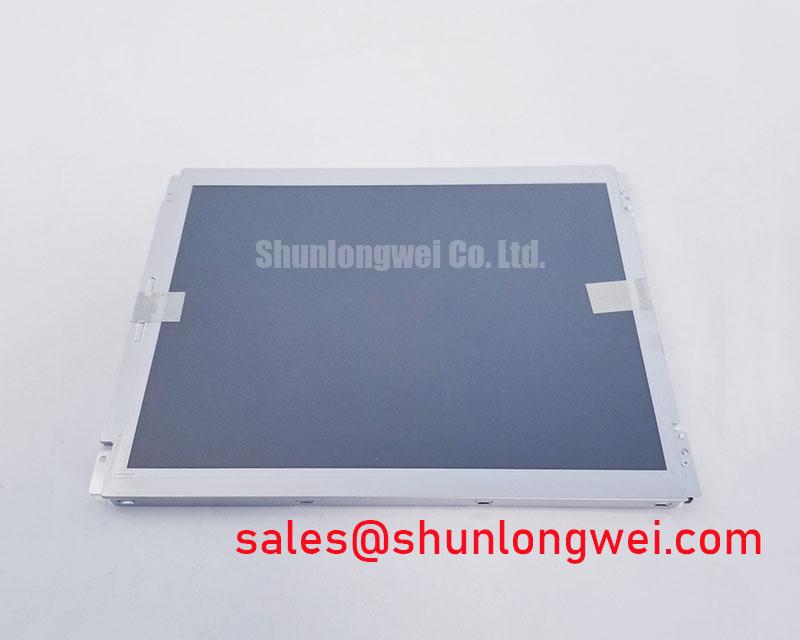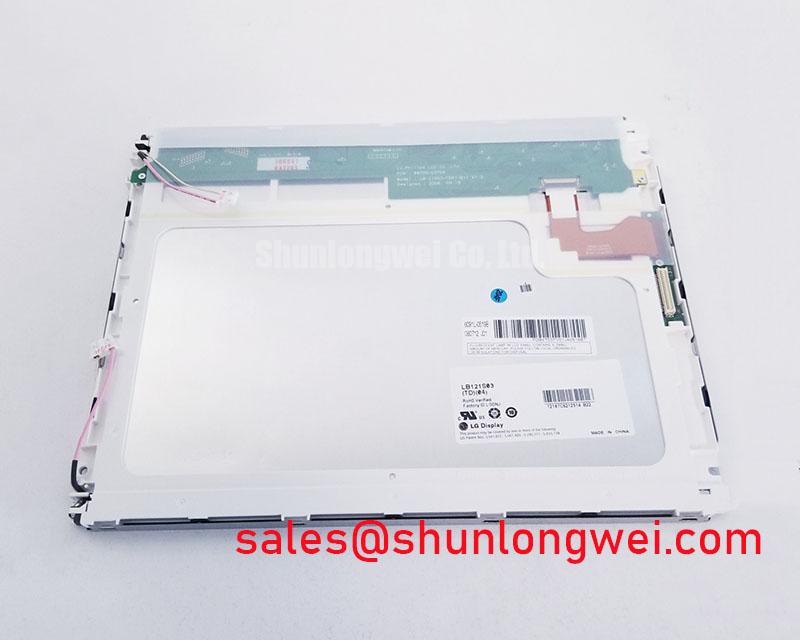Content last revised on November 21, 2025
LB121S03-TL04: A Robust 12.1-inch SVGA Display for High-Clarity Industrial and Medical HMIs
Executive Summary for Engineering & Procurement
A Strategic Overview of the LB121S03-TL04's Core Capabilities
The LG Display LB121S03-TL04 is a 12.1-inch SVGA TFT-LCD engineered for long-term operational reliability and visual performance in demanding environments. This display delivers a focused feature set optimized for industrial control panels, medical monitoring equipment, and specialized instrumentation where consistent performance is critical. With key specifications of 800x600 SVGA | 400 nits Brightness | -10°C to +70°C Operating Range, it provides significant engineering advantages. These include enhanced system resilience in fluctuating thermal conditions and sustained readability in high ambient lighting. What is the primary benefit of its wide temperature range? It ensures stable operation in non-climate-controlled settings, from factory floors to field equipment. For industrial HMI systems requiring a proven, robust 4:3 aspect ratio display, the LB121S03-TL04's combination of thermal resilience and optical clarity makes it a strategically sound design choice.
Application Scenarios & Value
System-Level Benefits in Industrial Automation and Medical Instrumentation
The LB121S03-TL04 is engineered to address the specific challenges of Human-Machine Interface (HMI) design in environments where consumer-grade displays falter. Its core value lies in its operational robustness, making it an ideal candidate for integration into systems that demand high uptime and consistent readability.
Consider a common engineering challenge: designing a control panel for a CNC machine on a factory floor. The environment presents fluctuating temperatures and variable, often harsh, overhead lighting. The LB121S03-TL04's wide operating temperature range of -10°C to 70°C ensures that the display remains functional and responsive, whether during a cold startup or under prolonged operational heat load. Furthermore, its 400 cd/m² brightness and anti-glare surface treatment directly counter ambient lighting issues, reducing reflections and ensuring that critical machine data is clearly legible to the operator. This minimizes the potential for user error and enhances operational safety. The standard LVDS interface simplifies integration with industrial motherboards and embedded systems, streamlining the design process for system architects. For applications requiring a larger display area, the related G150XNE-L01 offers a 15.0-inch diagonal screen.
Key Parameter Overview
Decoding the Specs for Enhanced System Reliability
The specifications of the LB121S03-TL04 are tailored for industrial and specialized applications, prioritizing durability and consistent optical performance. Below is a summary of its key operational parameters, with performance-critical metrics highlighted.
| Parameter Category | Specification | Engineering Significance |
|---|---|---|
| Display Technology | 12.1" a-Si TFT-LCD, TN, Normally White | Provides a cost-effective and responsive display suitable for dynamic information. |
| Resolution | 800(RGB)×600 [SVGA] | Standard 4:3 aspect ratio ideal for legacy and custom HMI software layouts. |
| Brightness | 400 cd/m² (Typ.) | Ensures clear visibility in well-lit indoor environments like factory floors and labs. |
| Contrast Ratio | 600:1 (Typ.) | Delivers clear differentiation between text, graphics, and backgrounds. |
| Interface | LVDS (1 ch, 6/8-bit) | Industry-standard interface ensures broad compatibility and simplifies electrical integration. |
| Operating Temperature | -10 ~ +70 °C | Critical for reliability in systems deployed in environments without stable climate control. |
| Surface Treatment | Antiglare | Diffuses ambient light to reduce reflections and improve readability for operators. |
| Outline Dimensions | 276(W) × 209(H) mm | Provides precise mechanical data for enclosure and mounting design. |
Download the LB121S03-TL04 datasheet for detailed specifications and performance curves.
Technical Deep Dive
Engineering for Reliability: Analyzing the Thermal and Optical Design
Two key design choices distinguish the LB121S03-TL04 for industrial use: its thermal architecture and its optical surface treatment. The ability to operate reliably across an 80-degree Celsius thermal window (-10 to +70°C) is not a trivial feature. It implies a robust selection of liquid crystal fluid and electronic components that resist performance degradation at temperature extremes. This prevents common issues like increased response time in the cold or image sticking under heat, ensuring consistent HMI performance. What is the benefit of an anti-glare surface? It enhances operator safety and efficiency by ensuring data is legible even under direct, high-intensity factory lighting.
The anti-glare surface is another critical element. Unlike a simple glossy screen that produces mirror-like reflections, an anti-glare coating utilizes a micro-textured surface to diffuse incoming ambient light. Think of it as the difference between a clear pane of glass and frosted glass; the latter scatters light to prevent harsh reflections, dramatically improving viewability without compromising the display's inherent brightness. This is crucial in a dynamic industrial setting where lighting conditions can change, ensuring that critical alerts and data points from a Programmable Logic Controller (PLC) are never obscured. This focus on fundamental reliability is a core attribute of the LB121S03-TL04's design philosophy.
Frequently Asked Questions (FAQ)
How does the -10 to 70°C operating temperature range benefit industrial applications?
This wide range guarantees operational stability in environments where temperature is not controlled, such as factory floors, warehouses, or in-vehicle cabins. It reduces the need for auxiliary heating or cooling systems for the display, simplifying enclosure design and lowering the total cost of ownership.
What is the practical advantage of the anti-glare (AG) surface treatment on the LB121S03-TL04?
The AG surface minimizes reflections from overhead lighting or nearby windows, which is a common problem in industrial and medical settings. This ensures that the screen remains readable from various angles, reducing operator eye strain and improving the accuracy of data interpretation.
Is the 1-channel LVDS interface on this display compatible with standard industrial motherboards?
Yes, the single-channel LVDS Interface is a widely adopted standard for industrial and embedded computing. This ensures straightforward connectivity with a vast majority of single-board computers and industrial controllers, simplifying system integration and reducing development time.
What does the 400 cd/m² brightness rating mean for HMI readability?
A brightness of 400 cd/m² (or nits) is well-suited for typical indoor industrial environments. It provides sufficient luminance to be clearly visible under standard factory or laboratory lighting, offering a significant improvement over typical consumer-grade monitors and ensuring data is easily read. For more information on display technologies, see The Ultimate Guide to TFT-LCD.
The strategic value of the LB121S03-TL04 lies in its adherence to proven industrial standards. For engineering teams developing long-lifecycle equipment, specifying a component with this level of environmental resilience and integration simplicity provides a foundation for a reliable and user-friendly final product. It represents a deliberate choice for durability over superfluous features, aligning with the core requirements of the industrial automation and medical device sectors. For further reading, an exploration of why total cost of ownership trumps initial price in industrial versus consumer displays can provide additional context.










